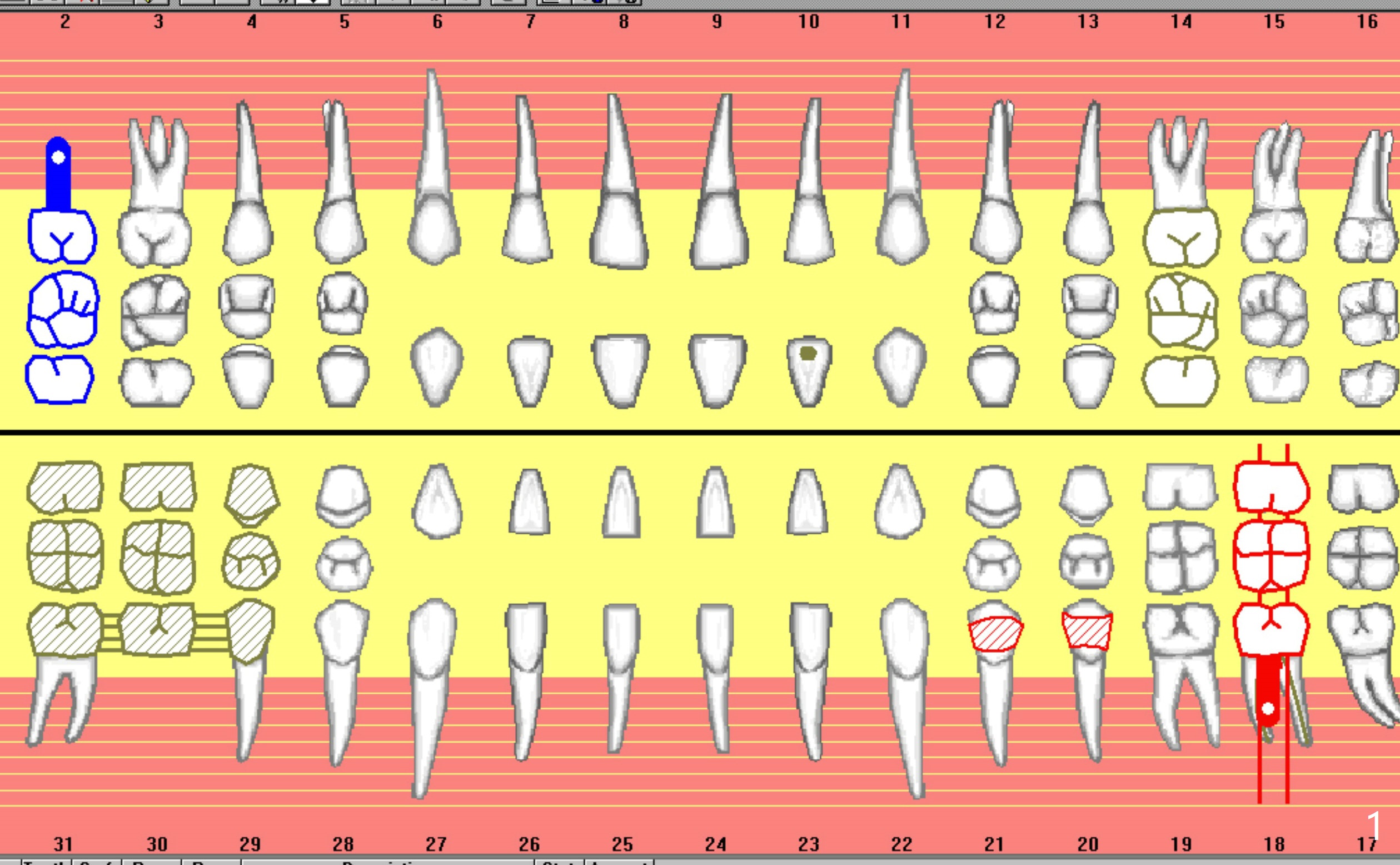
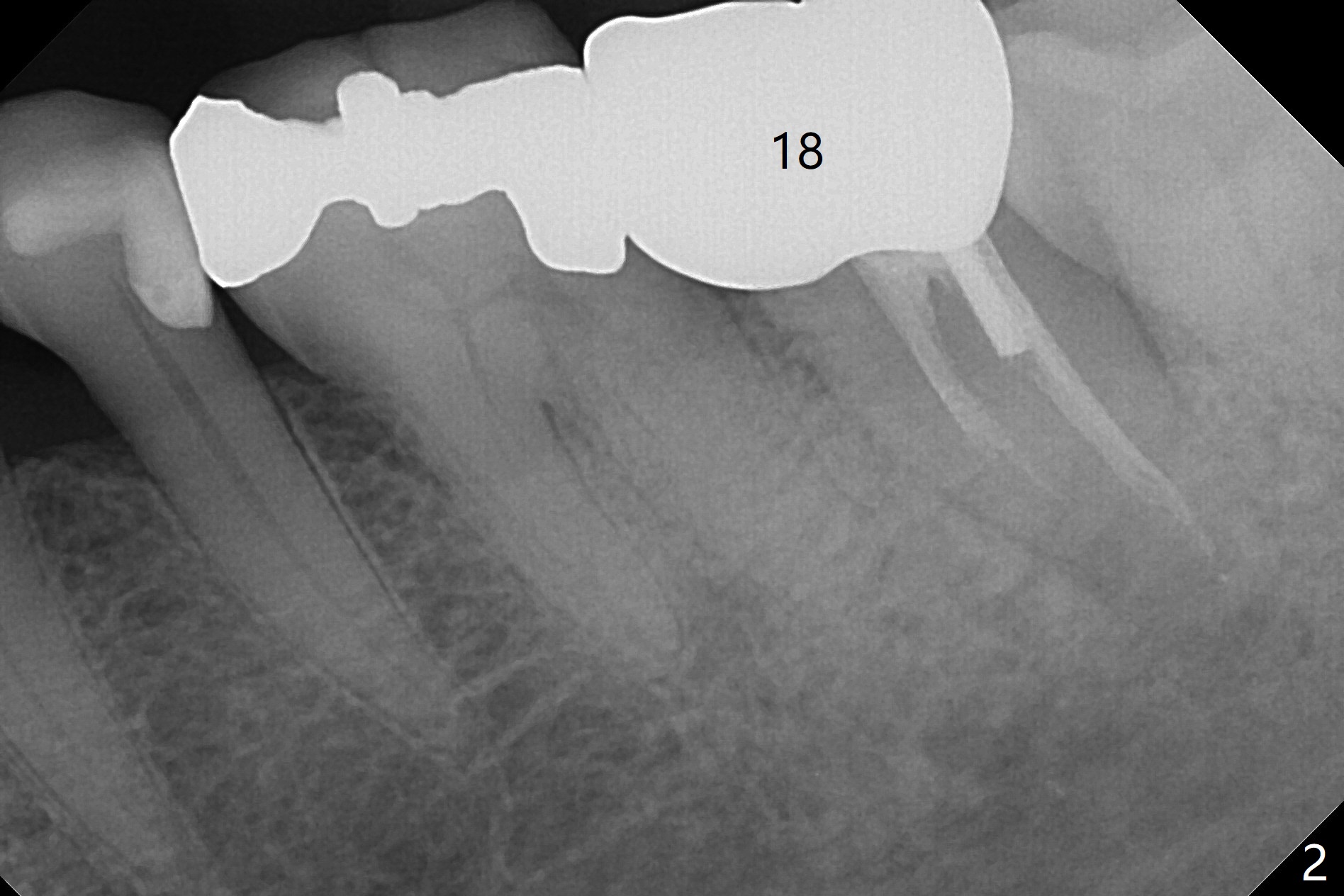
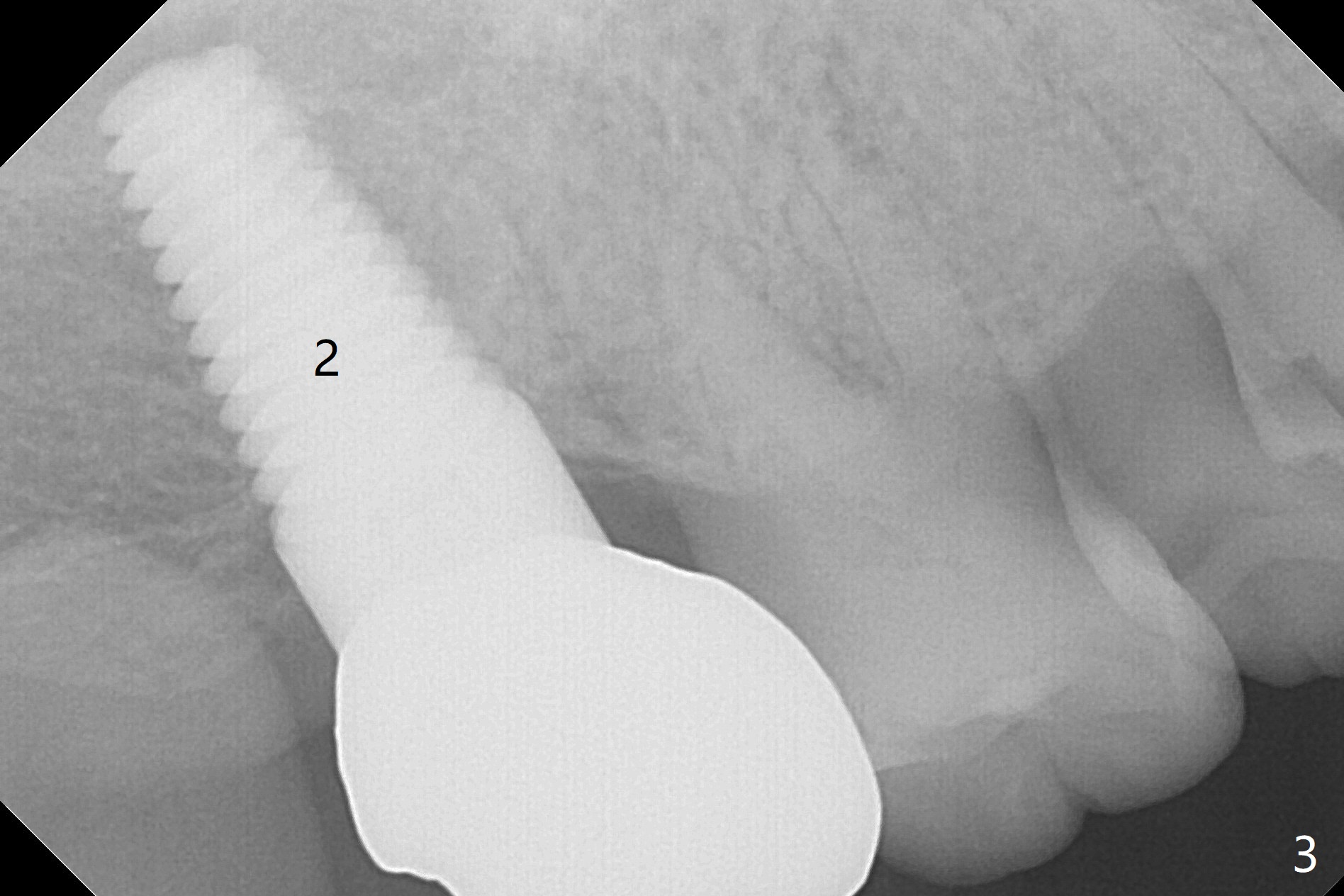
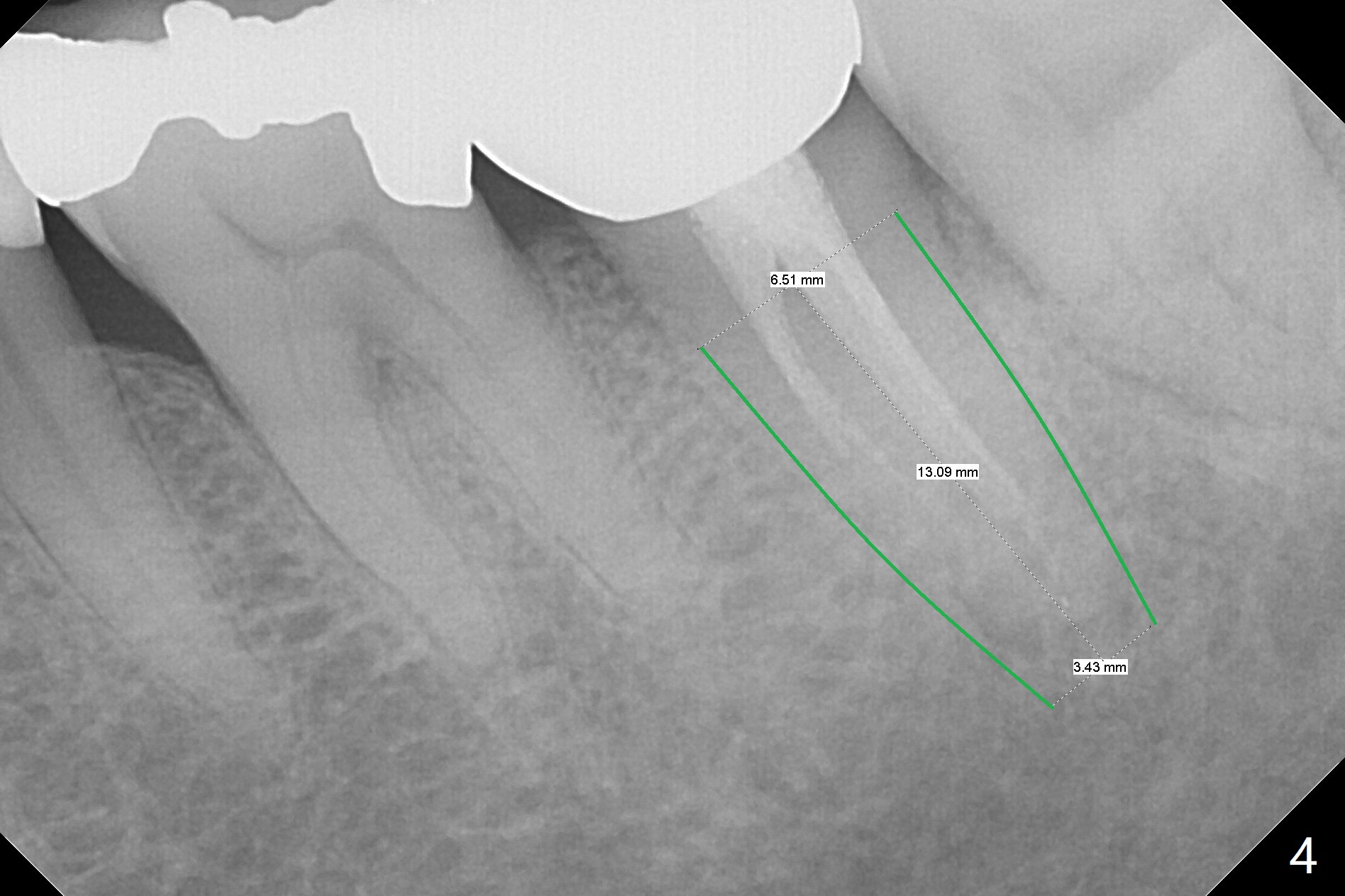
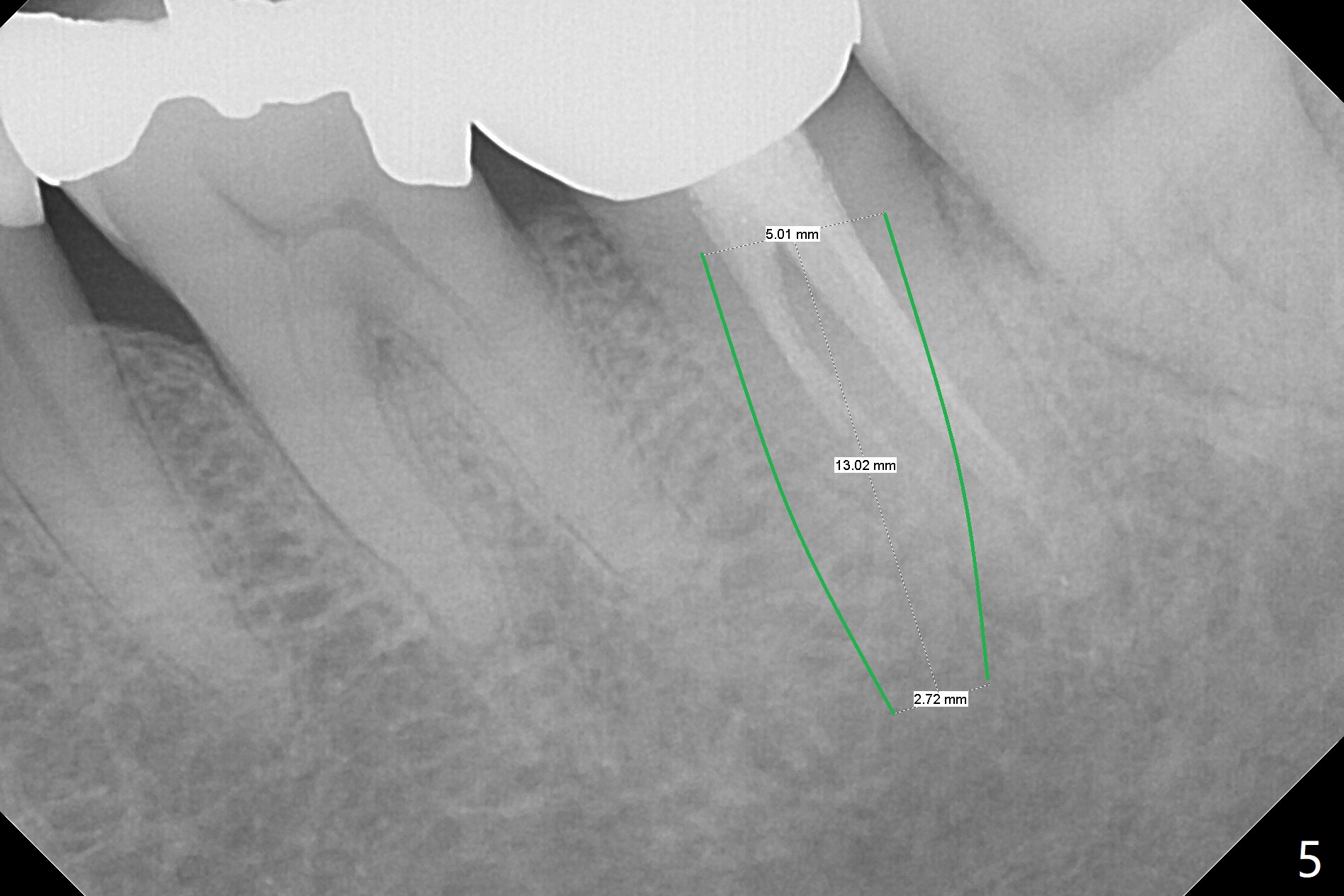
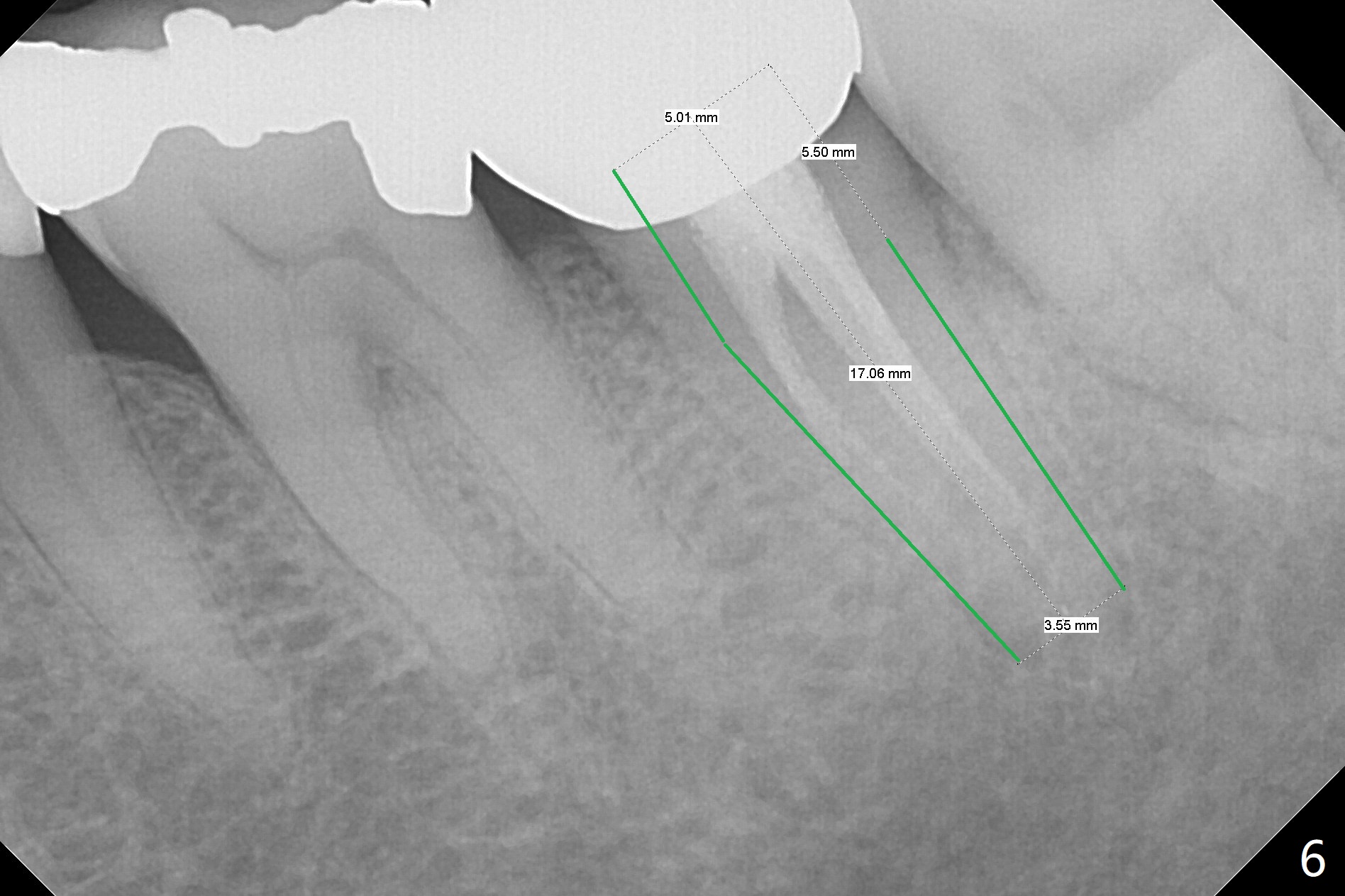
 |
 |
 |
 |
 |
 |
Temporary Abutment
A 76-year-old man initially (3 years ago) presented to clinic for implant consultation 2 weeks after #2 extraction due to root canal failure. A 7x17 mm tissue-level implant was placed following bone expansion and tapping ~ 4 weeks post extraction. A 6x3 mm unipost was placed for immediate provi-sional. Impression was taken with retightening the unipost (no cementation) 3 months postop. Two weeks post cementation, the patient started to report food impaction at #18 crown (Fig.1). Eight months later, distal open margin was found; the tooth #3 seems to have occlusal trauma. Ten months later, #2 and 3 contact remains normal. Finally the crown at #18 was redone. ~1.5 years post cementation, #2 crown proximal contact becomes loose. The crown was redone with no occlusal contact. Retrospectively it is due to mesial shifting of the tooth #3. Nine months post cementation, the tooth #18 shows sign and symptom of root fracture (Fig.2). Antibiotic appears to alleviate the pain. Occlusal adjustment is done at #30 pontic to reduce trauma to #3 with symptom improvement (Fig.3).
In all, the patient should be a heavy bruxer. When extraction and immediate implant is done at #18, immediate provisional should be low and stable (keep bone graft in place). It appears that a temporary abutment can accomplish the purpose. An IS one has been trimmed. There are 2 options for implant placement: along the long axis of the socket (Fig.4 using taps for osteotomy) and in the mesial slope of the socket (Fig.5 using drills). If the bone level implant (tap) does not work, switch to tissue level one (Fig.6).
Return to Lower Molar Immediate Implant, Prevent Molar Periimplantitis (Protocols, Table), Armaments, No Antibiotic Xin Wei, DDS, PhD, MS 1st edition 04/01/2018, last revision 04/30/2018